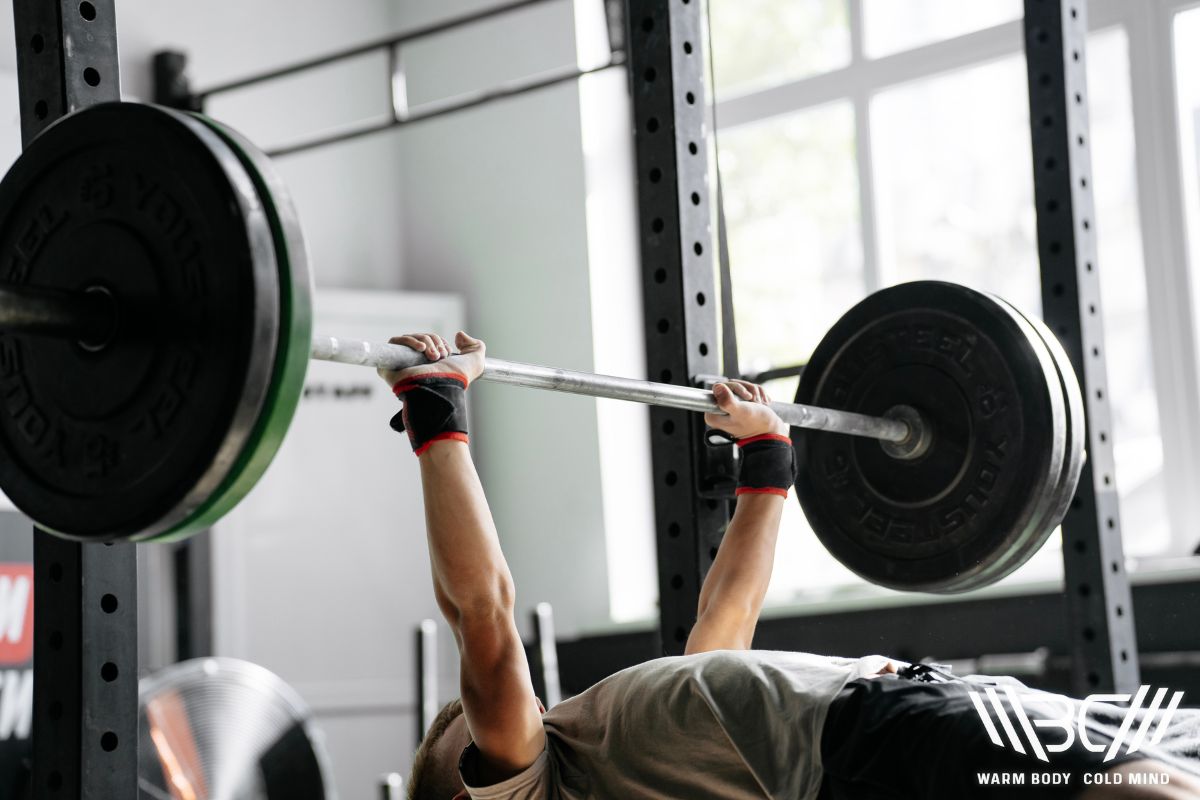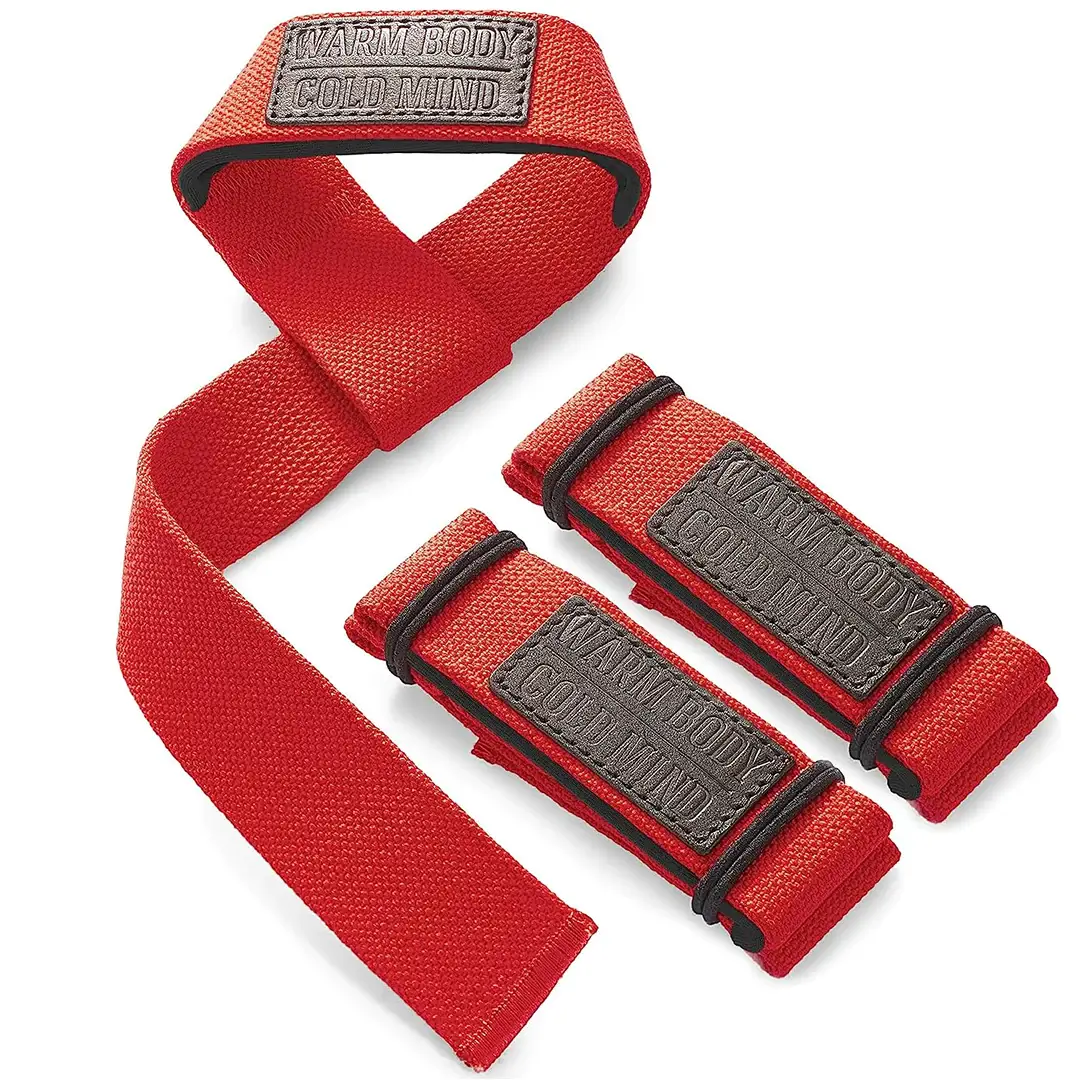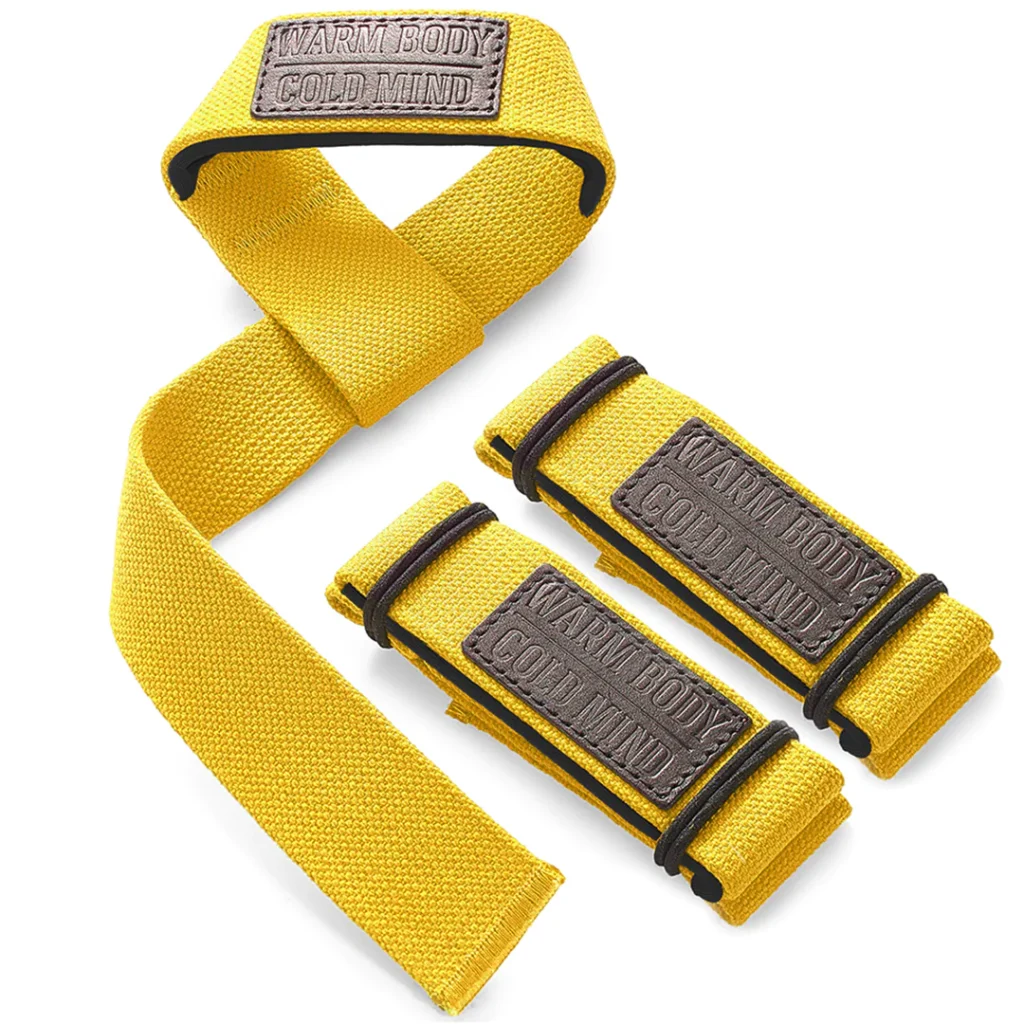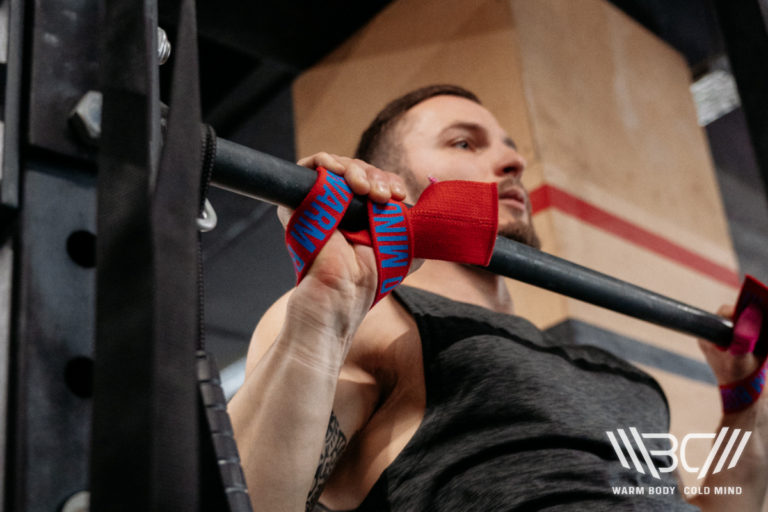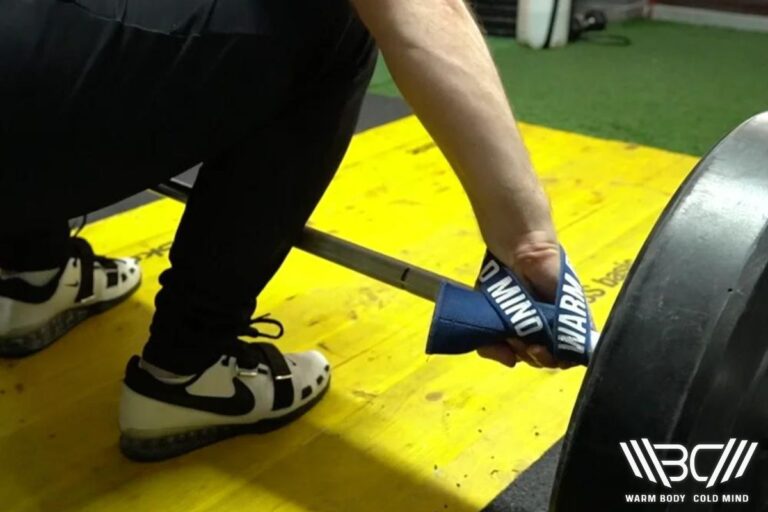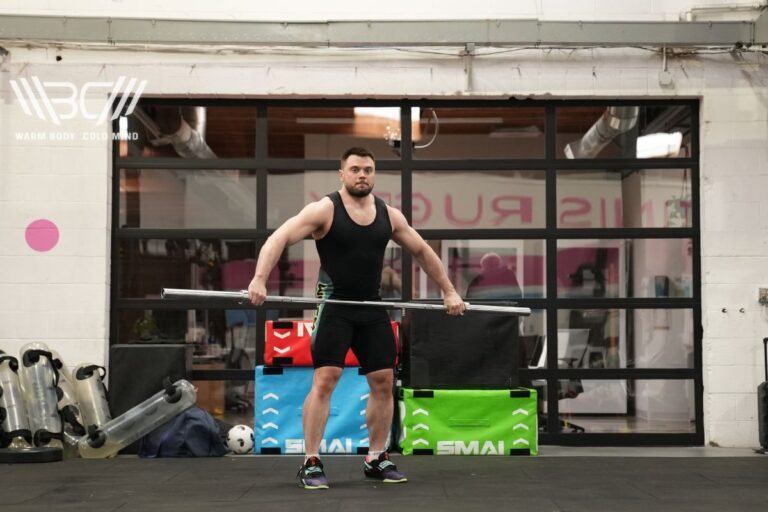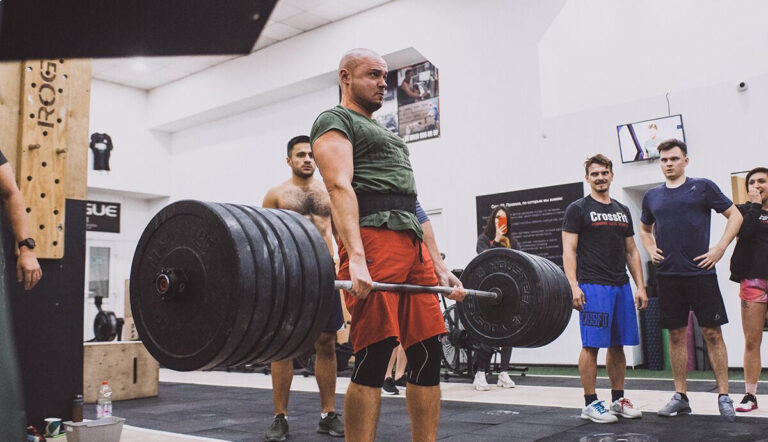Wrist Wraps vs Wrist Straps: Which Ones Do You Need?
Making the right choice in the topic wrist wraps vs wrist straps is very important, as it can make a world of difference. Just like a proper pair of running shoes can improve your running form and performance, the correct kind of support can take your lifts to a new level.
Wrist wraps and wrist straps may look similar (even too similar) at first, so you might think there’s not that much to making a choice – just pick whichever one you stumble upon first because they both do the same thing. But that’s not the case at all, because these accessories serve different purposes, and the subtle differences between them can make a significant impact on how safe and effective your training is.
Let’s get into more detail and make sure you choose something that’s going to suit you perfectly!
What is the difference between wrist wraps vs wrist straps? – Wrist wraps support and stabilize the wrist joint during weightlifting, and wrist straps focus on improving the strength of your grip by wrapping around the barbell or dumbbell to help with holding heavy weights.

What Are Wrist Wraps?
There’s a chance you’ve seen a weightlifter wearing wrist wraps and thought to yourself, “What’s the point of these thick bracelet-looking things they’re wearing?” The answer is simple: wrist wraps for weightlifting are a really important accessory that provides stability and compression to the wrist joint and helps prevent injuries. Think about bench presses or overhead presses and you’ll understand when to use wrist wraps: whenever wrist support is crucial.
1. Wrist Wraps Pros/Cons
Everything has a good side and a not-so-good side, so it’s important to get familiar with the pros and cons of wrist wraps for lifting. The most obvious pro is, of course, wrist support and stability – they offer support during heavy lifts and reduce the risk of injuries because most of them come from repeated muscle and joint strain.
Besides, they give a nice confidence boost because you can focus more on your lift, knowing your wrists are supported. However, keep in mind that they won’t do much for your grip strength and you shouldn’t rely on wrist wraps too much, because if you wear them all the time, it can put a damper on your natural strength development.
Remember that wrist wraps do not replace basic wrist strengthening exercises to strengthen the wrists and you should still be doing a plethora of exercises in addition to using wraps for support. Additionally, they might limit the mobility of your wrists and range of motion, so make sure to use them only for heavy lifts.

Secure your performance with our Velcro wrist wraps – the perfect blend of support and flexibility.
2. When and Why You Need Wrist Wraps?
Deadlifts, bench presses, overhead presses — basically, you can use wrist wraps for all heavy lifts that put a lot of stress on your wrist joints. Wrist wraps are also a good idea if you’re dealing with any kind of condition or pre-existing wrist injury or if you just have weak wrists.
3. How to Use Wrist Wraps?
Using wrist wraps and putting them on is super easy. You first need to place the loop around your thumb and place the wrap diagonally across the back of your hand. Then, wrap it around your wrist, adjust the tightness according to what feels comfortable to you and according to the amount of support you need, and fasten the end of the wrap to secure it in place. You want it to be snug but not too tight where it becomes constricting.

Pro Tip:
The key to using wrist wraps correctly is to not tighten them fully.
What Are Wrist Straps?
Weight lifting wrist straps are a piece of equipment (tool/accessory) used to improve the strength of your grip and help with holding heavy weights during weightlifting. They’re usually made of nylon, leather, or durable cotton. The straps have a loop that you wrap around your wrist and another section that wraps around the barbell or dumbbell.

Cotton Lasso Lifting Straps Pro
Enhance your lifting experience with Warm Body Cold Mind lasso lifting straps designed for durability and comfort.
1. Wrist Straps Pros/Cons
If you’re wearing wrist straps during lifting, you won’t have to rely so much on the strength of your hands and forearms; instead, you’ll be able to focus more on your lift and do more reps.
The way the straps are set up transfers the force more directly to the wrist and creates a link between your wrist and the weight you’re lifting. They will also help reduce fatigue in your forearms and allow you to lift heavier weights, because you won’t be limited by the strength of your grip.
Another situation where they can come in really handy is when you tear a callus and gripping the barbell becomes too painful.
Nevertheless, you shouldn’t depend on them too much, because you need to develop your natural grip strength, and wearing wrist straps too often will hinder that. It can also impact the overall strength of your forearm because you won’t be able to develop it naturally either. Use them moderately and only when you feel like you really need them.
2. When and Why You Need Wrist Straps?
Wrist straps shine during heavy lifts, like deadlifts, rows, or pull-ups, where the strength of your grip can be a limiting factor and hinder your ability to lift heavy weights effectively.
You’ll also benefit from wearing wrist straps if your forearms are prone to fatigue and get exhausted too quickly. It can prevent you from fully targeting the muscle groups you want to work on, so think about wearing some wrist straps to help you.
3. How to Use Lifting Straps?
These are not as easy to set up as wrist wraps are, but the process is still a piece of cake if you pay attention to a few key things.
First, you need to place the end of the strap through the loop and create a closed loop around your wrist. Then, wrap the strap around the barbell or dumbbell and tighten it to achieve a secure grip. Make sure it’s not uncomfortable and restricting. Once you’ve done it, all that’s left to do is to lift that weight and let the straps support your wrists.

Pro Tip:
When using wrist straps, use the ‘hook grip’ technique. A piece of further advice would be to wrap the strap correctly. You want to ensure the strap tightens around your hand as you grip the barbell (not just around the wrist). This will help reduce the strain on your forearm and boost lifting efficiency.
Differences Between Lifting Straps vs Wrist Wraps
Both accessories are very important for weightlifting, and although they’re not interchangeable, they complement each other really well.

Lifting straps focus mostly on improving the strength of your grip during weightlifting (deadlifts, rows, pull-ups, etc.). They’re made to loop around your wrist and then around the barbell or dumbbell. The straps make your grip more secure and allow you to lift heavier weights because you don’t need to focus so much on the strength of your hands and forearms.
Since you’re not relying completely on your own strength, you can concentrate on engaging the muscles you’re trying to target, which may help you develop them better.
Wrist wraps, on the other hand, don’t really focus on your grip so much, because their main job is to support and stabilize your wrist joints. When you wrap them around your wrists, they provide compression and limit excessive wrist extension, which reduces the strain on your tendons and ligaments. They keep your wrists properly aligned and reduce the risk of injuries.
The main difference between these two is in their intended usage – wrist straps are all about improving your grip so you can handle heavier weights and engage the muscles you want to work on, while wraps’ main focus is on stabilizing your wrist joints and preventing injuries. You don’t have to actually choose between them, because both are a valuable addition to any weightlifter’s gear, but make sure you know when to use each.
| ASPECT | LIFTING STRAPS | WRIST WRAPS |
|---|---|---|
| Purpose | Improved grip strength for heavy lifts | Support and stability to the wrist joint |
| Usage | Loop around the wrist and dumbbell or barbell | Wrap around the wrist |
| Function | Reduced reliance on forearm and hand strength and focusing more on muscle engagement | Limit excessive wrist extension, preventing injuries |
| Dependency | Can lead to reduced natural grip strength over time | Can limit wrist mobility and strength |
| Integration in Workouts | Help lifting heavy weights and targeting specific muscle groups | Help maintain proper wrist alignment |
Our Recommended Lifting Straps and Wrist Wraps
After going on and on about how great wrist straps and wrist wraps are, it wouldn’t be fair to leave you without some recommendations.
1. Warm Body Cold Mind Lifting Straps
WBCM’s lifting straps have been designed by Olympian champion Oleksiy Torokhtiy and give ultimate grip comfort. These lasso straps can be used for all kinds of exercises: weightlifting, powerlifting, functional fitness, etc. They’re very versatile and come in one size: 22.05” length, 1.57” width , and 0.16’’ thickness.
The straps are made of 100% cotton, soft neoprene, and authentic leather, so they’re both durable and comfortable, which is exactly how you want them to be. You never want your straps to be durable without being comfortable and vice versa, because they’ll either distract you or tear too soon.
They do need some breaking in when you get them, so don’t judge their comfort level straight out of the box. Give them a try and use them for a bit and you’ll see how comfortable they truly are.
Pros
- Reasonably priced
- Neat stitching
- Soft on the inside
- Seven color options
Cons
- They need to be broken in before being fully comfortable
2. Warm Body Cold Mind Wrist Wraps
WBCM’s wrist wraps are made for weightlifting, powerlifting, and strongman training, which means that all lifters can use them. They offer exceptional stability, and in terms of comfort, they’re stretchy enough to be comfortable and not limited to your range of motion, but they’re rigid enough to be sturdy, reliable, and durable.
They have an elastic strap and anchor system, so they’re easy to use even for beginners and can be applied and removed in a snap. They are 3” wide and come in 12” and 18” length variants, so you can choose the one you think will work best for you. They were designed and tested with a professional understanding of what’s necessary for you to achieve your athletic goals comfortably and successfully.
Pros
- Available in two lengths
- Easy to put on and take off
- Durable
Cons
- Only one color available
FAQ
Are Wrist Wraps and Wrist Straps the Same?
No, they are not – they may look similar but they serve different purposes. Wrist wraps focus on providing support and stability to your wrist joint by limiting excessive movement during lifts, while wrist straps improve the strength of your grip. You wrap them around your hands and then around the barbell or dumbbell, which helps make your grip more secure.
Do Wrist Wraps Help Wrist Pain?
They can potentially help with pain during weightlifting because of the support and stability they provide. Since they help reduce the strain on your ligaments and tendons, they reduce discomfort, but they won’t be able to help with any underlying issues that are causing chronic or severe wrist pain.
Are Wrist Wraps or Wrist Straps Better for Deadlift?
Usually, wrist straps are the winner (especially if you use them with a belt) when it comes to deadlifts because they help improve your grip strength and allow you to lift heavier weights because you don’t need to rely on the strength of your forearms as much as you would have to without the straps. Using wrist wraps for deadlift can be good if you primarily want to reduce the strain on your wrists, but performance-wise, straps are a better choice.
Do Wrist Wraps Weaken Your Wrists?
No, they don’t inherently weaken your wrists, but if you rely on them too much and wear them all the time, you will hinder natural strength development. Allow your wrists some time to do the lifting without any accessories.
Conclusion
Although both wrist wraps and lifting straps are widely used, they’re not the same and each of them has a different purpose. You don’t need to limit yourself to only using wrist wraps or lifting straps – just make sure you really understand their differences and that you use them in moderation.
If you’re scratching your head at the sight of the amount of wraps and straps the market offers, do yourself a favor and go with our recommendations: Warm Body Cold Mind Wrist Wraps and Warm Body Cold Mind Lifting Straps.
What are your thoughts on this? Do you have a preference when it comes to wrist wraps vs lifting straps? What do wrist wraps do for you and how have they helped you? Do you use both lifting straps and wrist wraps and why?
Leave your tips and thoughts in the comment section because we’d love to hear from you!
References:
- Chris A. Kennedy, “The Influence of the Closed Grip, Hook Grip, and Lifting Straps on Kinetic, Kinematic, and Qualitative Performance Variables of the Power Snatch,” Auckland University of Technology, Thesis for the School of Sport and Recreation, https://openrepository.aut.ac.nz/server/api/core/bitstreams/b91b0af1-1f07-40d8-9baa-d58569c7ec94/content (accessed November 30, 2023)
- “Exercise Induced Muscle Damage (EIMD),” Physiopedia, https://www.physio-pedia.com/Exercise_Induced_Muscle_Damage (accessed November 27, 2023).
- Ivan Jukic, Amador García-Ramos, Jiří Baláš, Jan Malecek, Dan Omcirk , James J. Tufano, “Ergogenic Effects of Lifting Straps on Movement Velocity, Grip Strength, Perceived Exertion and Grip Security during the Deadlift Exercise,” Physiology & Behavior 229 (2021): 113283, doi: 10.1016/j.physbeh.2020.113283
- Marilia Coutinho, “The Wrist Wrap as a Protective and Performance Enhancing Device in Powerlifting,” 2000, Academia.edu, https://www.academia.edu/41832379/The_Wrist_wrap_as_a_protective_and_performance_enhancing_device_in_powerlifting (accessed November 30, 2023)
- M&F Editors, “On Trial: Wrist Straps vs. No Straps,” Muscle & Fitness, https://www.muscleandfitness.com/flexonline/training/trial-wrist-straps-vs-no-straps/ (accessed November 27, 2023).
- Renan Lyuji Takemura, Carla Calviente Ortolani, Mateus Saito, Ricardo Boso Escudero, João Carlos Nakamoto, and Luiz Sorrenti, “Effects of Wrist Wrap in Handgrip Strength,” Acta Ortopedica Brasileira 31, no. spe3 (2023): e266236, doi: 10.1590/1413-785220233103e266236
- Shirley S.M. Fong, Louisa M. Y. Chung, Yang Gao, Jeff Chak Wai Lee, Tak Ching Chang, Ada W.W. Ma, “The Influence of Weightlifting Belts and Wrist Straps on Deadlift Kinematics, Time to Complete a Deadlift and Rating of Perceived Exertion in Male Recreational Weightlifters,” Medicine (Baltimore) 101, no. 7 (2022): e28918, doi: 10.1097/MD.0000000000028918
Author: Jacek Szymanowski
Performance architect, S&C movement specialist.
Jacek Szymanowski is a highly respected sports nutrition expert with a Master’s degree in Biotechnology. His innovative approach combines lifting and fighting strategies to help athletes optimize their performance. As a Strength and Conditioning Movement Specialist, he is dedicated to reducing injuries in athletes. His specialist training in Nutrition for Athletes equips him to provide expert advice on dietary habits and nutrition for peak performance.

